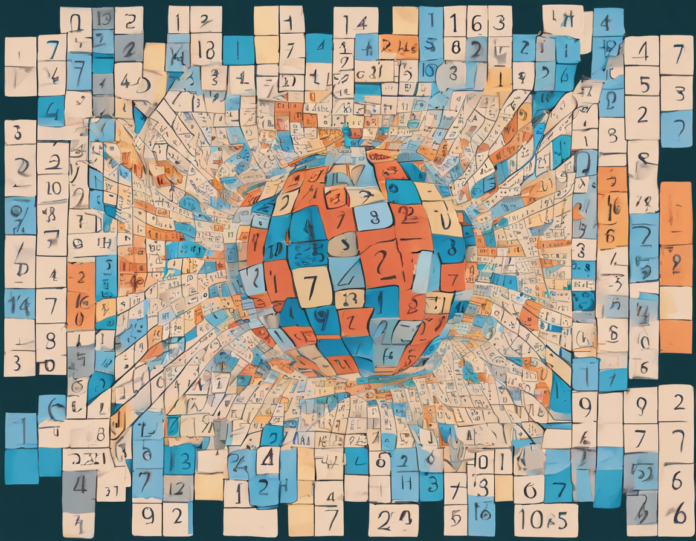Are you ready to test your skills in identifying non-prime numbers? Let’s delve into the world of numbers and explore the concept of non-prime numbers in this comprehensive guide. Whether you’re a math enthusiast looking to deepen your understanding or a student trying to grasp the fundamentals, this article will provide you with the knowledge and resources to confidently identify non-prime numbers.
Understanding Prime Numbers
Before we dive into non-prime numbers, let’s first understand what prime numbers are. A prime number is a natural number greater than 1 that can only be divided by 1 and itself without leaving a remainder. In other words, a prime number has exactly two factors: 1 and the number itself. Examples of prime numbers include 2, 3, 5, 7, 11, and so on.
What are Non-Prime Numbers?
On the other hand, non-prime numbers, also known as composite numbers, are natural numbers greater than 1 that have more than two factors. In simpler terms, a non-prime number can be divided evenly by numbers other than 1 and itself. Examples of non-prime numbers include 4, 6, 8, 9, 10, and so forth.
Identifying Non-Prime Numbers
Now that we have a basic understanding of prime and non-prime numbers, let’s explore some strategies for identifying non-prime numbers:
1. Factorization
One of the most common methods for identifying non-prime numbers is through factorization. To determine if a number is non-prime, you can factorize it and check if it has more than two factors. For example, let’s consider the number 12. The factors of 12 are 1, 2, 3, 4, 6, and 12. Since 12 has more than two factors (1 and 12), it is a non-prime number.
2. Division Method
Another approach to identifying non-prime numbers is the division method. You can divide the number in question by numbers other than 1 and itself. If the number has divisors other than 1 and itself, it is a non-prime number. For instance, if we take the number 15 and divide it by 3, we get 5, which is a whole number. Therefore, 15 is a non-prime number.
3. Square Root Rule
A useful rule for determining non-prime numbers is the square root rule. If a number n is not a prime number, it can be factored into two factors, at least one of which is less than or equal to √n. This rule can aid in quickly identifying non-prime numbers without having to check all possible divisors.
Properties of Non-Prime Numbers
1. Multiple Factors
As mentioned earlier, non-prime numbers have more than two factors, making them composite numbers. This property distinguishes them from prime numbers, which only have two factors.
2. Divisibility
Non-prime numbers are divisible by numbers other than 1 and themselves. This divisibility property allows for easy identification of non-prime numbers through factorization or division methods.
3. Product of Primes
Every non-prime number can be expressed as a product of prime numbers. This fundamental theorem of arithmetic states that every composite number can be uniquely factored into a series of prime numbers multiplied together.
Common Misconceptions about Non-Prime Numbers
1. All Even Numbers are Non-Prime
While it is true that all even numbers greater than 2 are non-prime (since they are divisible by 2), not all odd numbers are prime. For example, 9 is an odd non-prime number.
2. All Non-Prime Numbers are Composite
While non-prime numbers are indeed composite, not all composite numbers are non-prime. For instance, 1 is a composite number (as it has factors other than 1 and itself) but not considered a prime or non-prime number.
Practical Applications of Identifying Non-Prime Numbers
Understanding non-prime numbers has practical applications in various fields, including:
1. Cryptography
In cryptography, the concept of prime and non-prime numbers is fundamental to encryption algorithms like RSA. By identifying non-prime numbers, cryptographers can enhance the security and efficiency of cryptographic systems.
2. Mathematics Education
Teaching students about prime and non-prime numbers can improve their mathematical reasoning, logical thinking, and problem-solving skills. By engaging with the concept of non-prime numbers, students can deepen their understanding of number theory.
3. Number Theory
Non-prime numbers play a crucial role in number theory, a branch of mathematics that explores the properties and relationships of integers. Studying non-prime numbers can lead to new discoveries and insights in the field of number theory.
FAQs about Non-Prime Numbers
1. Can 1 be considered a non-prime number?
No, 1 is not considered a prime or non-prime number as it only has one factor (1) and does not meet the criteria for prime or non-prime classification.
2. Are all non-prime numbers composite numbers?
Yes, all non-prime numbers are composite numbers as they have more than two factors.
3. How can I quickly identify non-prime numbers?
You can use the factorization method, division method, or the square root rule to quickly identify non-prime numbers.
4. Can a non-prime number be expressed as a product of prime factors?
Yes, every non-prime number can be uniquely factored into a series of prime numbers multiplied together. This is known as the fundamental theorem of arithmetic.
5. Are there an infinite number of non-prime numbers?
Yes, there is an infinite number of non-prime numbers since there is no limit to the count of composite numbers that exist.
Conclusion
In conclusion, the ability to identify non-prime numbers is a fundamental skill in mathematics with practical applications in cryptography, education, and number theory. By understanding the properties of non-prime numbers and employing strategies like factorization and division methods, you can confidently distinguish between prime and non-prime numbers. So, challenge yourself to test your skills in identifying non-prime numbers and deepen your appreciation for the fascinating world of mathematics.

